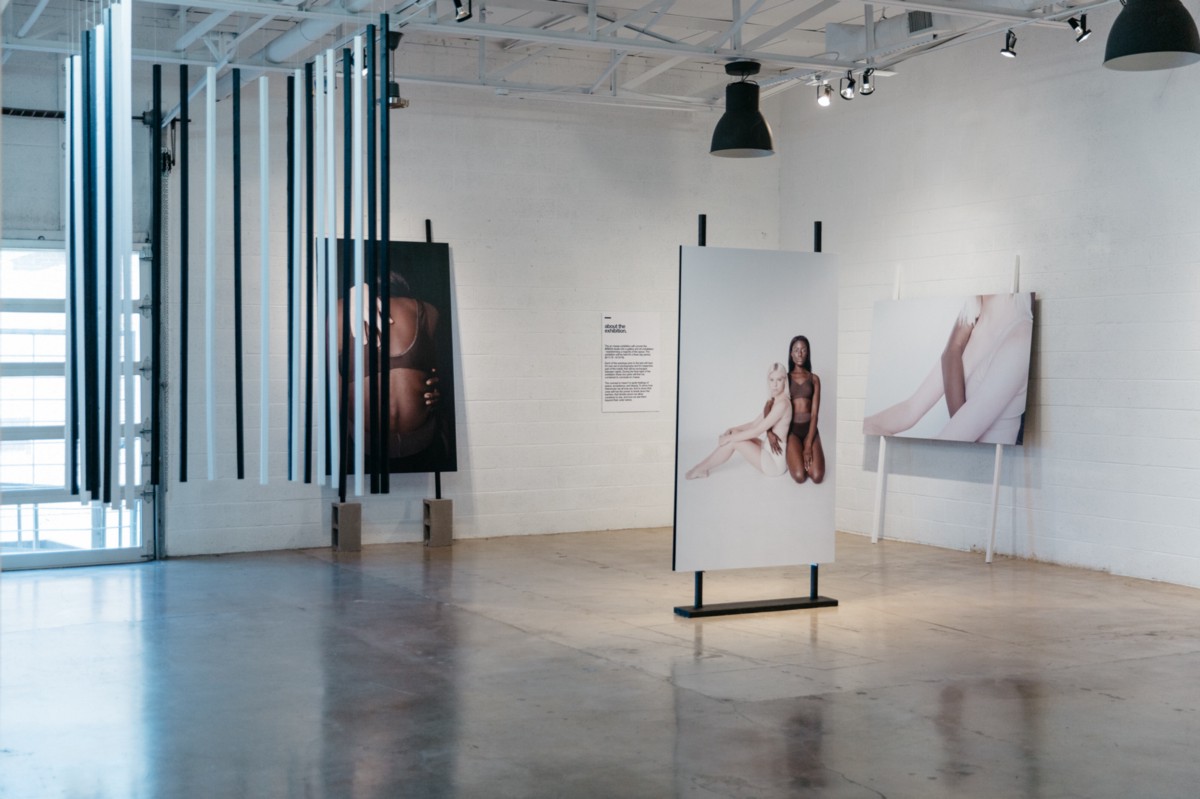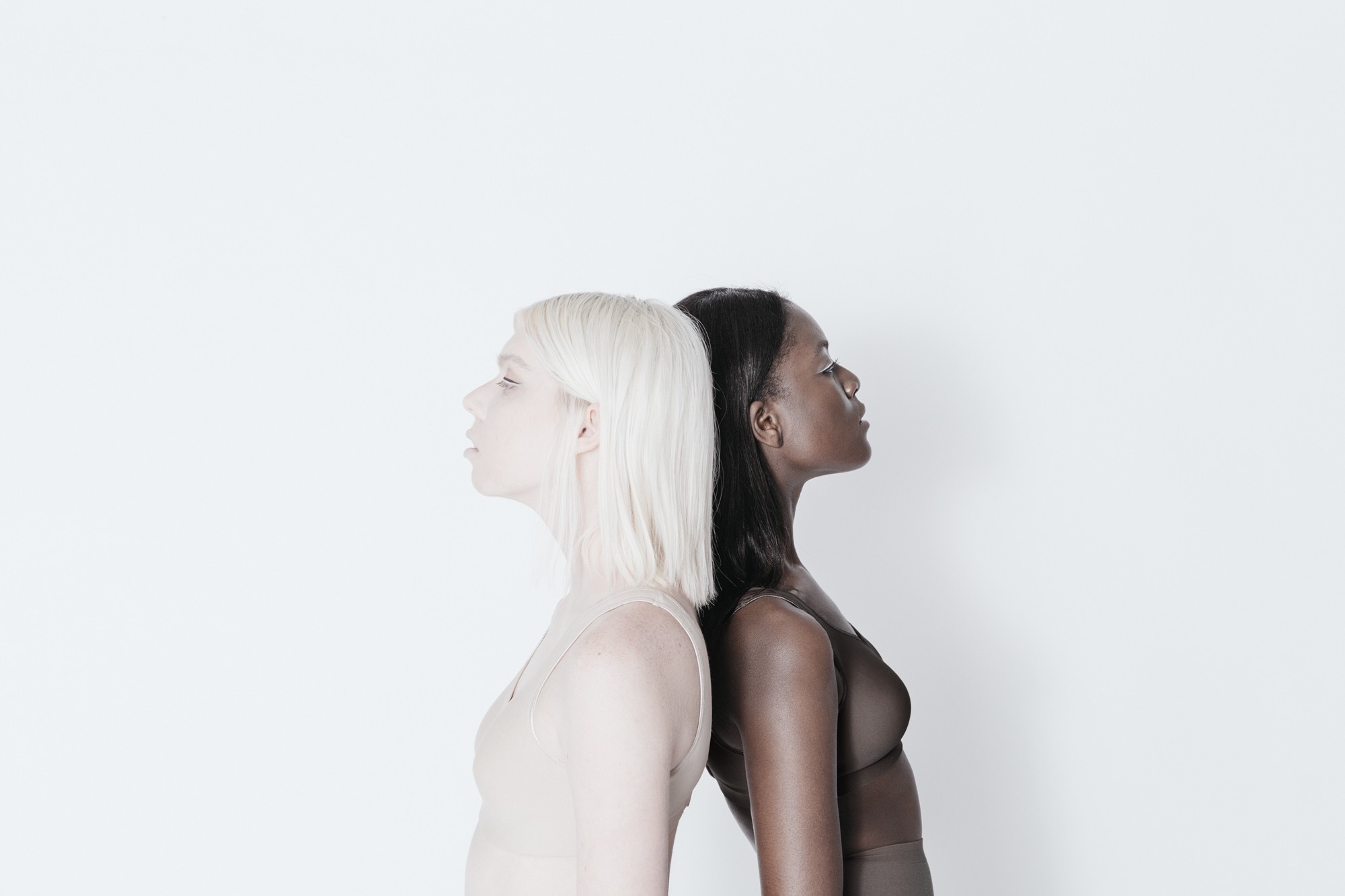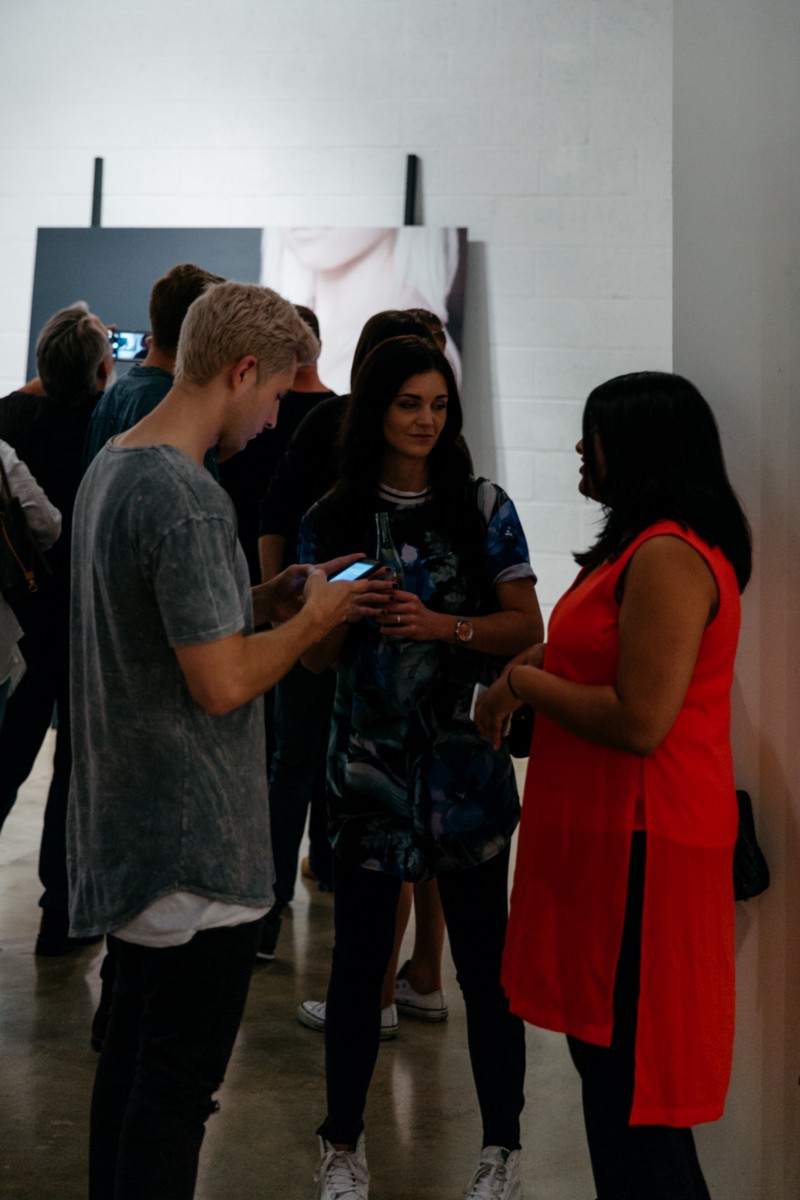How to and How not to put Together a Gallery
A Q&A with WELDER Max Kütz
Two weeks ago, Dallas WELDER Max Kütz held his first-ever photo gallery event. If you were attendance on one of the three nights where he displayed separate bodies of work, you wouldn’t have realized this talented photographer was a newbie. The show, entitled En Masse, is a display of our differences and our similarities and every detail was well constructed despite what Max may tell you. I sat down with Max to hear more about the subject matter, the process and some go-to dos and don’ts he gained from the entire experience.
Q. Last weekend you had your first personal gallery show. Can you tell us a little bit about the concept behind the show and work?
A. The concept behind the whole gallery was to show separation and then the coming together of differences. The concept was a three-day event, the first two days being intentionally very separate. The first day was a feature of the black girl, Ty, and the second day of the white girl, Cierra, and the third was the coming together of the two. The idea was to show that we are separated in our differences and that that’s a very real thing. Yet even though we have differences, we are very similar. The title, “En Masse,” is derived from the French word for “togetherness”.
Photos by Max Kütz
Q. Where did idea come from originally?
A. The idea came from multiple hard conversations with people. Back in February, I called a black friend asking about the Oscars, that’s when everything was going down with the Oscars, and I called him just asking some questions because you know, it’s a narrative that I’ve never seen before. His mom was in the room and so we ended up having a two-hour conversation about equality.
Honestly, it was the most eye-opening thing because I’m a white man from middle america, and my opinion of race and differences is the fact that we have differences but we’re beautiful because of that. I’ve never thought, ‘This person is less or this person is more because of the color of their skin or their orientation.’ Maybe there’s some of that in there and I’m consistently working to get those out, but as a general whole, I don’t have any prejudice towards anyone. And so I was talking to her and I said, “I hope that I’m the average.” And she kind of opened my eyes to see that I’m not, that my opinion isn’t necessarily the cultural norm. So that was very eye-opening. At the end of the conversation I asked her what I could do to further this conversation for myself and what I could do to help fix the people I’m responsible for. She said both sides have to come together to love themselves and each other. She also said you can look at documentaries, you can talk to people and you can start a conversation. And that’s where everything started. Through other conversations, the idea began to evolve.
Q. Do you feel like it’s important for every photographer to participate in a gallery show at some point?
A. I think it’s important for photographers to display their body of work. You do learn so much about the editing process, especially if you blow them up to the size I did at 6.5 feet because you see everything and people can just tear you apart. I think that some photographers don’t necessarily have to do that. If their goal is to be a commercial photographer only — do that — you fulfill your own calling or path. To me, if I’m trying to do art, if I’m trying to be an artist, what satisfies me is showing a body of work.
Photo by Max Kütz
Q. Tell me more about why that’s satisfying for you?
A. I think there’s something very real in today’s world about having something tangible. We live in such a “post this then forget about it” world. There’s merit behind having people view your work, but in today’s world, having a tangible piece that people can walk up to, kind of lose themselves in, slow down and not be distracted by a notification here, or the music playing there, you are 100%, in that moment looking at what this image does to you. I don’t think you get that a lot in today’s world. Seeing something tangible that you give all your attention to is huge and then seeing people have that happen to them because of a work I’ve created is just legitimately satisfying.
I mean, I’m sitting there in this gallery watching people just look and get the idea and concept and start talking about the thing that I hoped they would talk about. That’s the goal.
Photos by Max Kütz
Q. Were you able to engage in any of those conversations and what was that like?
A. Tough, actually. I had some people come up and kind of attack me for certain things. I had one person come up and really before I was able to talk about the narrative, he came in and grilled me on why it was a separate thing. He was very aggressive. I just told him, this is the narrative I was going for the idea that we are separate, it kind of makes you angry but this third night, if we can see the separation and come together through it, that’s the real narrative of the whole piece. The black night and the white night they were virtually very similar images — I told him that and the entire story and he said, “Oh yeah, I really like that.”
I talked to another guy on the third night and he told me he had never thought of it this way. That each of us individually was beautiful and separate but also the same. It was really huge to me that this 32-year-old man, through this conversation, I could make him think about something that in 32 years he’s never thought about.
A scene from night two of En Masse.
Q. You had a lot of great details within the show — down to the fact that you changed out the rods holding photographs and your color-coordinated outfits for each night. Can you tell us a little bit more about these details (and maybe others) and why you decided to be so thoughtful?
A. The idea ultimately was that walking in, everything you see was related. You walk in and it’s black — the install is black, the stilts that the images are hanging on are black. If I could have painted the space black, I would have in a heartbeat. It’s creating this environment of thought, this environment where you can’t miss what we’re trying to do here.
This install, made of two by twos, changed every night of the gallery along with all of the photos.
The install was a pretty cool shape. It was a three-sided cube with black two by twos hanging down from the ceiling to create this greater whole which was the idea that this piece of the install is you, this piece is me, this piece is this other person, etc. because we are individuals, and we are people creating a larger shape.
Q. Tell us a little bit about the work that goes into creating a three-day event like this. How long did you work on it and did you have any partners or help?
A. First step was that I wanted to have a gallery and I wanted it to have something to do with being together. Austin Mann sat down with me and talked about all of the possibilities. Ultimately, the biggest thing he said was do you want to make money with this or showcase work? If you want to make money, that’s fine, that’s not bad, but you have to choose between the two and the other will hopefully come along later.
Then I met with my friend Israel Vasquez of Autonomous and I was just kind of throwing around the idea. He told me he wanted to help, but you know when people say, “Oh, I would love to help,” but you kind of think, “Thanks, but I don’t know how much follow up there will be.”
I get home from a three-week trip and he tells me he has found a gallery space which is amazing, because that’s kind of the number one issue. I can create art, I can create a concept and get the word out, but I don’t have a gallery space. I met with the team at Breda and they loved the concept and it was in that conversation that everything was fully formed and connected.
It took so long to figure out how to get everyone together. It took months! We didn’t end up shooting until June 21st or so. We got everything together finally and we did the shoot at WELD from 8 am to 6 pm. We were actually able to take every single image in the gallery in one day. It was not easy, but it was great. I shot-listed out half of what I wanted and I let the other half be inspiration from the models or just from being there.
It’s interesting doing creative stuff because when you get to about 60% of a project, you’re kind of over it. At least I am! I took the images, brought them into my computer and was so ready to go. Then I looked at the images and was just so discouraged.
If you can see a final product, yet what you shot isn’t there yet, it’s terrifying. You feel like you just wasted everybody’s time, like you’re not very good and you can’t accomplish the thing you’ve been tasked with.
So I didn’t touch it for awhile. I would just sit at my computer and not do much or just fart around.
So then comes the week of July 4th when everything in Louisiana and here happened and it got to the point where I just didn’t care.
I didn’t care that I didn’t make this exactly how I wanted, it just had to be done.
This is the very thing I recommend not doing: putting editing off so long that you then have to stay up till about 6 am for a week and then get up at 8 am to finish images.
The beginning of gallery week, we had nothing done but hit it as hard as we could. We worked until 4 am every night that week before the show.
This is horrible! This is terrible — you should never, ever do this! The first day I saw any images was Thursday, the opening day of the gallery. We wrapped for the first day at 5:45 pm. The problem was that happened every day. Friday, we had to do everything again. We had to pull down the entire install that morning, switch out all of the display stilts and switch the photos.
Photos by Max Kütz
Q. Do you feel like procrastination is a part of your process and would have been part of your process no matter what?
A. For me, that procrastination actually changed the entire outcome. Would it have been easier had I not procrastinated? Sure. But it was almost like I couldn’t get any work done until I was inspired to get work done which is the most volatile, scary and dangerous thing to do because what if inspiration never comes? What if you have to lock down and just do it and hope that inspiration comes. But a lot of times that’s how inspiration happens too — you literally don’t feel inspired at all and you feel like the worst artist alive, and then you sit and do it.
And you do it, and do it, and do it to the point where inspiration just strikes.
Q. You’ve mentioned you learned a lot through this project? Do you want to talk a little bit more about this?
A. The color wasn’t right on these images until literally the end of this project. I probably spent one entire night until 6 am working on this coloring. I had already edited 15 of them. I went back and I knew that just wasn’t it.” So I went back and selective colored, gradient mapped, worked on the backdrop color, refined and massaged until this point where I knew it was perfect. Then I had to go back and redo everything but it was worth it because I pushed to a point where I could finally say that I love it.
Ty’s bra color was actually a white, flesh-toned color and it just didn’t fit the narrative so I had to change it. It took just so much time finessing that fabric color to look real and not look terrible. I did multiple iterations to finally make it look real. It was just nuts, honestly, but I learned a ton about blending modes, which blending mode works with different selective colors and how a gradient map plays over the image.
On a larger scale, I just learned how to and how not to put a gallery together.
I learned how to communicate with people. It was important that I learned how to bring in reliable people and if there are things I can do that don’t have to rely on others, maybe do it. Always keep your plan open but also have some sort of contingency plan.
I learned a lot about myself and my propensity to procrastinate. Which is not okay but maybe okay? (Laughs)
Photo by Max Kütz
Q. Would you say the show was a success? Why or why not?
A. It was so worth it, honestly, if one person came every night and it started a conversation with their family or the people close to them, then it was a success.
One night afterwards, I went to my mom’s house and sat with her and some of her friends and they were having this conversation about how they were raised and how their perceptions of people that were different than them were determined by the people that raised them. That was the moment I knew success had happened.
Q. What was the most memorable response?
A. There were so many memorable responses. I have a five year old sister, Emily, and her and my mom were there. And it was the first night so it was images of Ty being displayed. I was holding Emily, and mom said, what’s different between you and her? And she looked at it and goes, “Her neck is bigger than mine and her hands are bigger than mine, but we both have five fingers.” Not even a thought of color — didn’t mention it once. That’s my goal: that color isn’t a thought. That’s the thing though, is that it’s beautiful — black people are beautiful, asian people are beautiful, white people are beautiful — we’re all beautiful. But Emily didn’t think to mention color when my mom asked her what was different.
Q. Did you vary your technique at all while shooting each set of photographs?
A. Actually no. Nothing was digitally done, so we swapped out back drops, but I didn’t move lighting once. Yet the images look radically different because of how light plays on Ciera’s skin vs. Ty’s skin. The images from the first night were so dramatic and the image from the second night were soft. It was these two differences in beauty. It was cool to see that the only thing that made that difference was backdrop and skin color.
Q. What’s one piece of advice you would give to someone who is about to embark on putting together their first gallery?
A. I’ve been hearing this thing about creatives hating their work, and I understand it for sure — I think there’s always a moment in the process where you feel like, “I am crap. This is not working,” but at the end of the project, you should be proud of what you’ve created if you worked hard. Know the things that need to change, know the things that will make you a better creative. Know a time is going to come when you feel the worst — that 60–80% when you start feeling like you just can’t do it. But if you devote your time and work and push, then you can, and should, be proud of your work. Be honored to do what you do and if you don’t love the work you create, then why do you create it?
If you don’t love it, keep pushing, and then, choose to love it.
For more information about En Masse, including updates about future showings and how you can purchase prints, visit the website.
See more of Max’s work at mxktz.co










